The new Mustang Ford is expected to unveil next April is part of a rare breed. Only a handful of nameplates have ever lasted a half century. And during those five decades, an equally small number of possible Mustang successors have made it from the design studio to the showroom.
For every car you see on the street, there’ve likely been a dozen or more that never got that far. Stylists are constantly creating alternatives that go through an extensive vetting process before one lucky winner makes the cut. And over the 50 years of Mustang, Ford has had plenty of options to choose from, some spectacular while others leave us wondering, “What were they thinking?”
As part of a splashy, balls-to-the-wall build-up for the official 2015 Mustang launch, the Detroit maker is offering an unusual look into its archive to see some of the pony cars it considered over the decades, some we’d love to have had while others leaving us grateful they never got very far.
Among the latter is the 1966 Mustang wagon concept shown here. Explains a Ford release, “In the mid-1960s, Ford designers considered at least a couple of different concepts for a Mustang station wagon, with at least one running prototype based on a 1966 coupe getting built. Another design study included elements for refreshed models that were coming later that decade. All of the known Mustang wagons were three-doors that were closer to a European “shooting brake” than a traditional American family station wagon.”
We realize that two-box designs were still the rage in the 1960s, but whatever you want to call it, a shooting brake or wagon, it just doesn’t work as a Mustang. Then again, considering the solid demand for the Ferrari FF, perhaps Ford really did miss out on something.
(Click Here for the latest spy shots of the 50th anniversary Ford Mustang.)
The original Mustang was unveiled at the New York Auto Show in the spring of 1964 carrying the now unusual ’64-1/2 designation. The original pony car was based off the same platform as Ford’s then popular Falcon model and while the final two-door body style clearly resonated with consumers, company stylists also offered up a four-door alternative that likely would not, in hindsight, have had nearly the traction.
Ford also considered a two-seater, perhaps envisioning the original Mustang as a successor to the first-generation Thunderbird which, by the mid-1960s had grown bloated and lost any of the elegance of the original two-seater that continues to captivate buyers. Apparently, a 1964 two-seat Mustang concept never made it past the clay model stage in the Ford design studios.
(Saleen creates a Tribute Mustang honoring racing legend George Follmer. Click Here for more.)
The maker also looked at options that appear to have been strongly influenced by then cutting-edge European design, as well as designs lifted from the racing world. That includes a 1963 rendering of a two-seat, mid-engine Mustang.
Says Ford: “Although it was probably never seriously considered for production as a Mustang, this hard-top variation of the Mustang 1 concept from 1962 did provide some inspiration for the GT40 MK I that would race at Le Mans and elsewhere beginning in 1964.”
(Cruising through Motown at the Woodward Dream Cruise. Click Here for more.)
A more Ferrari-like model, initially dubbed Avanti made it a little further through the review process, actually being transformed into a fairly intriguing, full-size model. It adopted a fast-back hatch rather than a trunk. The name was later changed to Allegro, explains Ford, most likely because Studebaker had launched its own, cutting-edge design known as the Avanti designed by the legendary Raymond Loewy.
As with the original Thunderbird, the original Mustang began getting larger and heavier. And it went through some horrendous transformations over the years, as well as some good ones. Perhaps the worst to make production was the Mustang II.
Never making it out of the studio, meanwhile, was the 1966 Mustang Mach 1 Concept. “As the first-generation Mustang transitioned from a pony car to a larger and heavier big-block muscle car, the Mach 1 concept was created as a preview of the 1968 model,” reports Ford. “The original nose of the concept drew inspiration from the 1963 Mustang II concept.”
Incidentally, Ford also came up with a Mach 2 Concept around that time that was developed by Ford design chief Gene Bordinat and his Special Vehicles Group. Much more European in concept, it switched to a rear-engine layout using Ford’s old 289 Hi-Po V8. A possible successor to the Shelby Cobra, the Mach 2 Concept made it out of the styling studio but then got no further than the auto show circuit, Ford notes.
Curiously, while most of the concepts developed for Mustang over the years never even made it that far, a few apparently influenced the development of other Ford vehicles. A 1970 project, dubbed the Mustang Milano Concept heavily influenced the Australian Falcon XB coupe of the mid-1970s.
Lest you think that these extreme takes on Mustang design were limited to the early years of the pony car’s life, Ford pulled from the archive an image of the 1992 Mach III Concept.
“The Mach III provided the first public hints of the new design direction that was coming for the fourth-generation Mustang,” explains Ford. “While classic elements like the grille pony badge, side scoops and tri-bar taillamps were included on the 1994 Mustang, the two-seater layout and the low-cut speedster windshield have never been part of a regular production Mustang.”
(Happy Birthday, Dear Henry. Marking the 150th anniversary of Ford’s founder‘s birth. Click Herefor the story.)
We’re looking forward to see what Ford finally comes up with when they lift the covers on the 50th anniversary Mustang next year. But we’re also hoping the maker will be generous enough to give us a look at the designs that didn’t make it into production – without having to wait for the Mustang centennial.

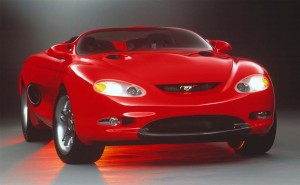
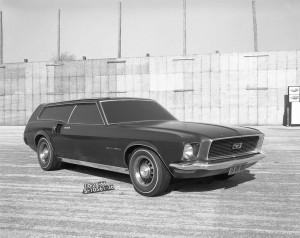
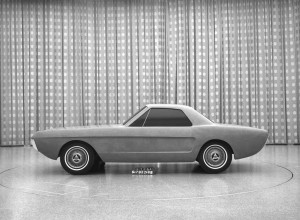
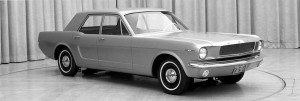
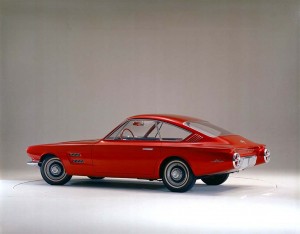
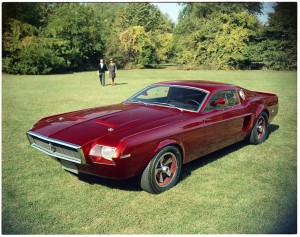
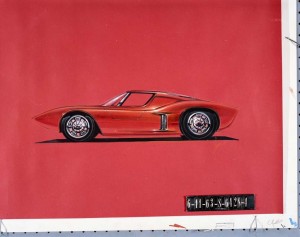
Other than the Porsche 906/Ferrari inspired model, I’m really glad that Ford didn’t build ANY of the other models.